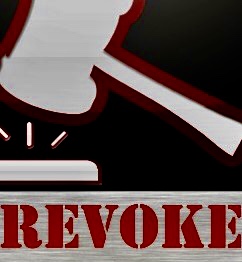
Trevor Todd and Jackson Todd have over sixty years of estate litigation practice, including removing executors and trustees
Removing executors or trustee is one of the most common enquiries that I receive.
The matter is both intriguing and somewhat complex, largely due to historical developments concerning the legal differences between the role of an executor and a trustee.
1. Voluntarily Removing Executors
The personal representative is sometimes just as fed up with the beneficiaries as the latter are with the handling of the estate. On such occasions, a personal representative may be prepared to simply resign. The law however is not as a straightforward as is the simple proposition of resignation. The difficulty is caused by the legal fact that a personal representative is firstly an executor, and then later, a trustee of the estate. The general consensus of most British Columbia practitioners is that a personal representative becomes a trustee once he or she has completed his or her duties by collecting all of the assets and paying all the debts of the estate. The personal representative then holds the remaining assets as trustee for the estate, and distributes the assets in accordance with the will or laws of intestacy. It is often difficult to determine exactly when this conversion from an executor to a trustee occurs. We are all familiar with the general principle of “once an executor, always an executor”. Many personal representatives have attempted in the past to simply resign from their office by way of a deed. The courts have generally speaking not allowed this to occur. In Re McLean (1982),37 O.R. (2d) 164, Justice Osbourne stated: “Section 2 of the Trustee Act establishes a procedure whereby a trustee may resign by deed, while executors may only be removed from their office by the court pursuant to Section 37. This reflects the common-law principle that the function of an executor and trustee are different and separate. After the executor has fully administered the estate, the role of trustee is assumed. This however does not mean that the person appointed to fill both functions ceases to be an executor merely because that function has been performed.” The judge held that a person can resign as a trustee, yet continue as executor. However to resign as executor, an application would have to be made under the usual court application procedures. In Re Berg Estate (1994) 90 B.C.L.R. (2d) 237 Chief Justice Esson (as he then was), in deciding an application for removal of an executor and the appointment of a replacement, found that he must follow the direction of Section 26 of the Estate Administration Act, for the removal and replacement of a trustee who continues to hold the office of executor, and that it must be dealt with by Sections 27-32 of the Estate Administration Act, rather than the provisions of the Trustee Act. Justice Esson found that Section 30 of the Estate Administration Act was a specific section dealing specifically with those who are both trustees and executors, rather than the general provisions of the Trustee Act, which only refers to trustees. The general provisions of the Trustee Act, must defer to the specific provisions of the Estate Administration Act. As a result of this case, in British Columbia it is likely that in order to obtain the voluntary discharge of a personal representative, it is necessary to go through the process as set forth in Sections 27-30 of the Estate Administration Act, and not proceed by the mere discharge by deed alone. The formal process for discharge is set out in Sections 27-30 of the Estate Administration Act. The matter is brought before the court by notice of motion with supporting affidavits, setting out the reasons for removing executors voluntarily. In order to be discharged, the personal representative must have passed his or her accounts pursuant to Section 99 of the Trustee Act, or alternatively, has obtained the consents of all the parties involved. The court must appoint a new personal representative in the place of the one who was discharged, unless the estate has been completed or the court determines that it is unnecessary.
2. Involuntarily Removing Executors
The courts have historically been very reluctant in removing executors. There is some case authority for the proposition that the courts in fact do not even have power in removing executors at all, regardless of improper conduct, until the executor has become a trustee, and it is difficult to determine just when this has occurred. The courts have an inherent jurisdiction to govern trustee’s and personal representative’s actions to ensure that they are fulfilling their duties, but it is doubtful that the courts have an inherent jurisdiction to removing executors. If an application is being considered for removing executors (as opposed to a trustee), then the proper recourse is to apply under Section 97 of the Trustee Act, for an order restraining the executor from acting any further, and for the appointment of a judicial trustee in his or her place. With respect to the removal of an administrator, the courts would likely find that they have the inherent jurisdiction to do so, since the powers of an administrator arise from a court order. However, as with an executor, it may also be required that an order be obtained restraining the administrator from acting further, and for the replacement of a new trustee . Section 30 of the Trustee Act states: “A trustee or receiver appointed by any court may be removed and a trustee, trustees or receiver substituted in place of him or her, at any time on application to the court by any trust beneficiary who is not under legal disability, with the consent and approval of a majority in interest and number of the trust beneficiaries who are also not under legal disability”. Section 31 of the Trustee Act states: “If it is expedient to appoint a new trustee and it is found inexpedient, difficult, or impracticable to do so without the assistance of the court, it is lawful for the court to make an order appointing a new trustee or trustees, whether there is an existing trustee or not at the time of making the order, and either in substitution for or in addition to any existing trustees”.
3. Power of the Court to Pass Over an Executor
In Mortimer on Probate 2nd ed., p.209, the learned author states: “Where a will has been made, and an executor appointed, “the court cannot exercise any discretion as to granting or refusing probate. If probate is refused, it must be on the ground of some legal disability, recognized and allowed by the common law. For an executor is but a trustee for the deceased, and such person as the testator thought proper to appoint for that office, without any previous qualification; nobody can add qualifications to him other than those which the testator has imposed, but he shall be who, and in what manner, the testator shall judge proper”. Many cases have stated that the right of a testator to nominate the executor to administer his estate should not be lightly interfered with. (see Re Agnew Estate (1941) 3 W.W.R.723) That case also stated that, apart from statute, a court of probate had no right to refuse probate to an executor named in a will unless he was legally incompetent to act. Ill will or animosity displayed between the parties is in itself not a sufficient ground to pass over an executor. In Re Wolfe Estate, 21 W.W.R. 85, B.C.C.A., the court held that under Section 92 of the Trustee Act, it is within the judicial discretion of the Supreme Court or judge thereof to appoint a judicial trustee before the grant of letters probate or letters of administration in place of an executor or person entitled to administration. Re Haggerty Estate, 60 W.W.R. 574 held that Section 9 of the Estate Administration Act confers a limited and unusual discretion on a court to pass over a named executor “by reason of special circumstances”. In that case a grant was refused where the named executor had within the last year been convicted of a crime involving misappropriation of estate funds. The court stated that while a testator’s choice of executor should not be lightly interfered with, this was a proper case where discretion should be exercised by refusing the grant to the named executor. The court discussed a long line of authorities that evidence of bad character alone is not a sufficient ground for refusing a grant. In fact, in Re Oughton, 40 E.T.R. 296, the notorious sex offender Oughton who was sentenced to an indeterminate sentence was not passed over as executor, on the basis that his circumstances were not sufficient to justify passing him over. In Stadelmier vs Hoffman 25 E.T.R. 174 however, the court passed over one of four named executors, where the other three intended to bring action against the fourth on the basis of undue influence with respect to some large inter vivos gifts. The court exercised its discretion to pass over due to the position of actual conflict that the fourth executor was in. He could not in his capacity of executor attack the gift to himself, while at the same time maintain in his personal capacity that the gifts were proper.
4. Grounds for Removal and Replacement of a Trustee
A. General Principles The most commonly quoted case in this area of the law is Letterstedt v Boers, 9 App. Cas. 371, which stated that the welfare of the beneficiaries of the trust is the primary concern. Lord Blackburn quoted Story’s Equity Jurisprudence, s.1287 and stated: “Story says, but in cases of positive misconduct, courts of equity have no difficulty in interposing to remove trustees who have abused their trust; it is not indeed every mistake or neglect of duty, or inaccuracy of conduct of trustees, which will induce courts of equity to adopt such a course. But the acts or omissions must be such as to endanger the trust property or show a want of honesty, or a want of proper capacity to execute the duties, or a want of reasonable fidelity”. The learned Judge held that the main guide for the courts must be the welfare of the beneficiaries.. B. Leading Case in British Columbia In the decision of Conroy v. Stokes, (1952) 4 D.L.R. 124 (B.C.C.A.), the court set out the test for the removal of a trustee. In that decision the Court was considering an appeal where the trial Judge removed trustees appointed under a will due to friction that had developed between the applicants and the trustees. An application was made under Section 30 of the Trustee Act which allowed the courts to remove and replace trustees where it “shall be expedient to appoint a new trustee”. The Court of Appeal applied the decision of Forster v. Davies (1861) 45 E.R. 1134 to the effect that: “The mere fact of there being a dissension between one of the several cestquis que trust and the trustee is not a sufficient ground for this court removing that trustee from the trust.” The court went on to quote with approval the test enunciated in Lettersteht v Boers (1884), 9 App. Cas. 371 where it was stated that in order to justify the removal of the trustee it must be shown that the acts or omission must be such as to endanger the trust property or to show a want of honesty, or want of proper capacity to execute the duties, or want of reasonable fidelity. Accordingly, the test as set out in Conroy V. Stokes can be stated as follows: In order to remove a trustee it must be shown that his or her acts or omissions either a) in danger trust property or, b) demonstrate dishonesty; or c) incapacity; or d) a lack of reasonable good-faith. Most of the recent cases demonstrate that the critical aspect of such an application is evidence that the trust property has been or is endangered by the conduct of the trustee. It therefore seems clear in law that while it is often the friction between the parties that causes the client to seek counsel, it is insufficient as a ground for removing a trustee unless the friction endangers trust property or otherwise demonstrates dishonesty, incapacity, or a lack of reasonable good-faith. It is essential that counsel critically consider the evidentiary basis for removing a trustee prior to bringing on such an application. The practitioner must analyze the particular family dynamics that are involved. There are increasingly more and more contested claims between siblings, step siblings, step parents and the like. While the clients will typically tell a tale of horror, embezzlement, and high handedness, it again must be stressed that the practitioner must carefully examine the aforesaid legal test, prior to rushing off to court to attempt to remove the offending trustee. The courts will also on occasions, gives the executor another chance to remedy the default or face being removed. The court will view a loss to the estate that is caused by inadvertence more tolerably then they will view a loss due to a breach of duty for personal gain, dishonesty, or incapacity.
5. Specific Conduct or Circumstances
A) Bad character in itself is not sufficient ground for refusing a grant. See re Haggerty estate, and re Oughton estate; B) Hostility between the trustee and the beneficiaries; There must be more then mere friction or dissension, it must be near impossible for the trustee to act impartially and objectively (see Conroy V. Stokes); C) Dissension between trustees When the continued administration of the trust has by virtue of a situation arising between the trustees so that it has become impossible or improbable, the trustees were removed and a trust company up appointed (see re Consiglio Trusts ( No.1) (1973), 3 O.R. 326); D) Failure to pass accounts This is generally not sufficient to remove a trustee or a personal representative unless persisted in. A trustee has two years to pass accounts pursuant to the provision of the Trustee Act (see re Adams (1989) 62 D.L.R. (4th) 758 ( B.C.C.A.), and Conroy V. Stokes); E) Conflict of interest and duty (i) The question is whether it would be difficult for the trustee to act with impartiality (see Re Walter W. Shaw Company Ltd. (1922), 3 W.W. R. 119) (ii) It is not a conflict of interest and duty requiring the removal of a trustee where the trustee is also a beneficiary. (see Gillespie v Gillespie unreported, February 13,1991, Vancouver Registry No. C851522); (iii) In Stadelmier v. Hoffman 25 E.T.R. 174, the court passed over one of four named executors who had received a large inter vivos gift from the deceased, which was being attacked by the other three executors. The court found this to be an actual conflict of interest. F) Claims by an executor against the estate (a) The court used Section 31 of the Trustee Act to remove and replace a trustee who made a claim for compensation for services provided to the deceased (see Mardesic v Vukovich estate (1988), 30 B.C.L.R. (2d) 170); (b) An ongoing claim under the Family Relations Act by a widow who was executrix (see Harrison v Harrison (1982), 40 B.C.L.R. 143); G) Claims by the estate against the executor (a) Hall v. Hall (1983), 45 B.C.L.R. 154, where a claim was made by the estate against the trustee for breach of trust; H) Breach of Fiduciary Duty In Szpradowski v. Szpradowski (December 4,1991), Victoria Registry No. 903850, the court helped in removing executors where it found that the executor had taken money of the estate for his own purposes, had set an interest rate that was inappropriate, and pre took remuneration, was in gross breach of fiduciary duty. I) Failure to make a full and fair disclosure of gifts to the executor prior to the death of the deceased The court will make a presumption that the gift was held in trust for the benefit of the estate and ordered the executor to either pay a fund back to the estate or face removal as executor (see Ilott v. Klaussen ( January 14,1997) Nanaimo No. S14137); J) Intestacy or unwilling or incompetent named executor Section 7 of the Estate Administration Act states as follows: (1) This section applies if (a) a person dies intestate; (b) a person leaves a will, but without having appointed an executor willing and competent to take probate, or (c) the executor at the time of the death of the person resides out of British Columbia and it appears to the court to be necessary or convenient by reason of the insolvency of the estate of the deceased or of other special circumstances to appoint some person to be the administrator of the estate of the deceased, or part of it, other than the person who, but for this section, would have been entitled to a grant of administration. (2) In the circumstances referred to in subsection (1), the court may, in its discretion, appoint a person it thinks fit to be the administrator, on the person giving security the court must direct. (3) An administrator under subsection (2) may be limited or on condition or otherwise, as the court thinks fit.
6. Conclusion
I strongly believe that most estate practitioners will increasingly see an influx of upset beneficiaries in their office to help with removing executors and trustees demanding and replacing them when undesirable. A review of the law in this area quickly demonstrates to the practitioner that such an application is not nearly as straightforward and simple as one might think. The purpose of this paper has been to demonstrate that a careful analysis of the evidence available in order to make such an application must clearly be found and properly analyzed, if such an application is to succeed.




